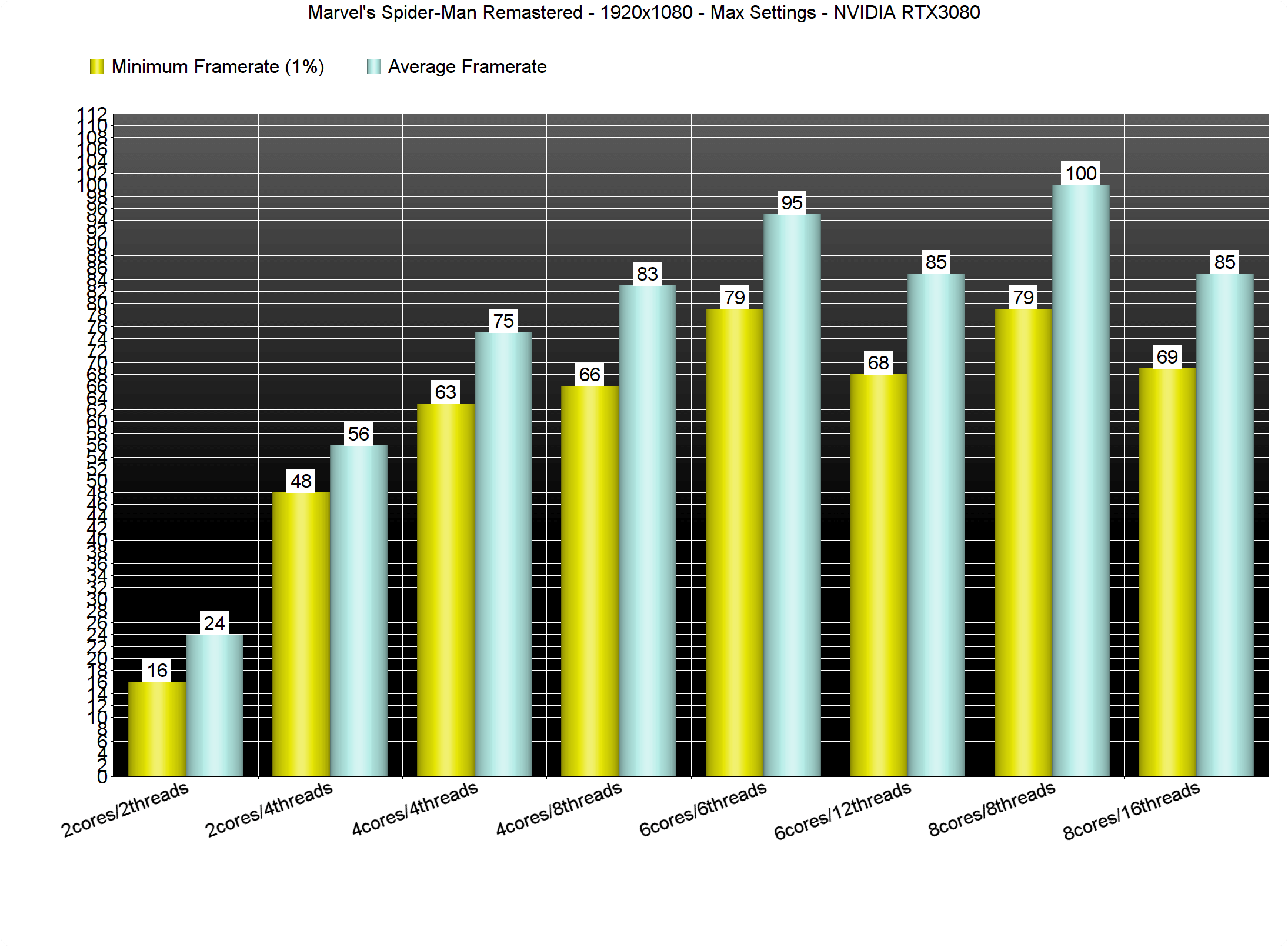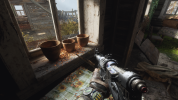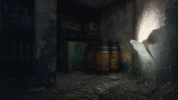Cheers man, much appreciated.I did try that, basically to try and see if it was the cause of intermittent stuttering that I was getting. No difference in performance, if anything a little worse. All the people I've seen reporting big gains from disabling hyperthreading have had Coffee Lake or older gens, not surprisingly that's also the CPU DSOGaming has. Other sites I've seen test with more modern CPU's show an advantage for hyperthreading.
I did discover that my intermittent stuttering (non-RT related) can be solved by a full reboot. If I play some other game or just do general work on my PC before running Spiderman I can get that stuttering. Clean reboot, it's usually gone. Very weird.
Install the app
How to install the app on iOS
Follow along with the video below to see how to install our site as a web app on your home screen.
Note: This feature may not be available in some browsers.
You are using an out of date browser. It may not display this or other websites correctly.
You should upgrade or use an alternative browser.
You should upgrade or use an alternative browser.
Current Generation Games Analysis Technical Discussion [2022] [XBSX|S, PS5, PC]
- Thread starter BRiT
- Start date
Silent_Buddha
Legend
I did try that, basically to try and see if it was the cause of intermittent stuttering that I was getting. No difference in performance, if anything a little worse. All the people I've seen reporting big gains from disabling hyperthreading have had Coffee Lake or older gens, not surprisingly that's also the CPU DSOGaming has. Other sites I've seen test with more modern CPU's show an advantage for hyperthreading.
I did discover that my intermittent stuttering (non-RT related) can be solved by a full reboot. If I play some other game or just do general work on my PC before running Spiderman I can get that stuttering. Clean reboot, it's usually gone. Very weird.
Could possibly be memory fragmentation in Windows. It's much better than it used to be, but can still pop up. For whatever reason for me it is worse when using an NV GPU versus an AMD GPU. I don't get nearly as much uptime with Windows on an NV GPU (1-4 weeks) as I do AMD (3+ weeks) before I have to do a hard reset to clear everything (explorer getting unstable, browser exhibiting memory issues with 100+ tabs, slowdowns in some games when a web page is open, etc.) up if I've been using the machine heavily.
Regards,
SB
davis.anthony
Veteran
Flappy sir, would you mind doing a compare and contrast with your 12400F running the game with hyperthreading and without (i.e. 12 threads on 6 cores vs 6 threads on 6 cores)?
I've seen stuff about threads thrashing around in HT situations for years - since back to the P4 days - and so I did a Googlio about Spiderman scaling and found this:

Marvel's Spider-Man Remastered PC Performance Analysis
Powered by Insomniac's proprietary engine, it's time now to benchmark Marvel's Spider-Man Remastered and see how it performs on the PC platform.www.dsogaming.com

I have no way of testing for this or not. But could you try and validate, or not, these results for six cores with your setup?
Speculation ahoy, but a game targeting 7 physical cores (and AFAIK a console can assign threads to cores with almost iron clad determinism) might not play nice with hyperthreaded cores and and a windows scheduler that doesn't know better....
Not saying it's a cause, but maybe it's a factor in some cases?
@Dictator , you have one billionstarscomputers at your disposal, is there any truth to this?
Tried this on my 4770k and Ryzen 5 3600 and didn't notice any real difference, it was maybe a little worse.
Flappy Pannus
Veteran
Could possibly be memory fragmentation in Windows. It's much better than it used to be, but can still pop up. For whatever reason for me it is worse when using an NV GPU versus an AMD GPU. I don't get nearly as much uptime with Windows on an NV GPU (1-4 weeks) as I do AMD (3+ weeks) before I have to do a hard reset to clear everything (explorer getting unstable, browser exhibiting memory issues with 100+ tabs, slowdowns in some games when a web page is open, etc.) up if I've been using the machine heavily.
Regards,
SB
Yeah I had the same idea, so I've tried using a memory defragmenter as well before rebooting with no help. It can pop up after one hour if even just browsing with a few tabs.
I've actually seen this behavior across 2 systems with one other series, or rather engine - the ReEngine, specifically when running from a hdd. RE7, 2 and 3 exhibit severe stuttering when opening new rooms and at random action points when installed to a HDD. Reboot, run them immediately after a reboot - 99% of stutters gone. Installing to an SSD lessens this greatly, but I'm just dying to know what actually is the reason for this. This is across 2 different motherboards, CPU's, 3 different GPU's. Just bizarre.
Flappy Pannus
Veteran
Made a video comparing specular aliasing with DLSS/IGTI/PS5. I don't know why but YT consistently butchers the frame pacing of my videos when it finally processes them in 4k so it makes this comparison less clear than it does locally, but the differences should still be readily apparent.
Maybe a clash with how windows use page file?Yeah I had the same idea, so I've tried using a memory defragmenter as well before rebooting with no help. It can pop up after one hour if even just browsing with a few tabs.
I've actually seen this behavior across 2 systems with one other series, or rather engine - the ReEngine, specifically when running from a hdd. RE7, 2 and 3 exhibit severe stuttering when opening new rooms and at random action points when installed to a HDD. Reboot, run them immediately after a reboot - 99% of stutters gone. Installing to an SSD lessens this greatly, but I'm just dying to know what actually is the reason for this. This is across 2 different motherboards, CPU's, 3 different GPU's. Just bizarre.
Try disabling page file, and check whether the issue persist.
Normally I only see this problem if a developer thinks he is smarter than the OS scheduler and totally forgets to first only feed the full cores before feeding the 2nd logical core of each core.Flappy sir, would you mind doing a compare and contrast with your 12400F running the game with hyperthreading and without (i.e. 12 threads on 6 cores vs 6 threads on 6 cores)?
I've seen stuff about threads thrashing around in HT situations for years - since back to the P4 days - and so I did a Googlio about Spiderman scaling and found this:

Marvel's Spider-Man Remastered PC Performance Analysis
Powered by Insomniac's proprietary engine, it's time now to benchmark Marvel's Spider-Man Remastered and see how it performs on the PC platform.www.dsogaming.com

I have no way of testing for this or not. But could you try and validate, or not, these results for six cores with your setup?
Speculation ahoy, but a game targeting 7 physical cores (and AFAIK a console can assign threads to cores with almost iron clad determinism) might not play nice with hyperthreaded cores and and a windows scheduler that doesn't know better....
Not saying it's a cause, but maybe it's a factor in some cases?
@Dictator , you have one billionstarscomputers at your disposal, is there any truth to this?
Normally the scheduler should prevent such behavior. But who knows there is always some way to "exploit" the schedulers.
But it seems more like the game only scales with 4cores 8 threads when ht or whatever is available. So possibly just a bug. 4c8t looks normal but 6c12t does not bring anything and 8c16t also nothing. So I really guess there is a problem in the job pipeline.
Last edited:
davis.anthony
Veteran
Tried this on my 4770k and Ryzen 5 3600 and didn't notice any real difference, it was maybe a little worse.
I just thought, if my CPU's are bandwidth bound would turning SMT off really do anything?
betternatethanlever
Newcomer
I was recently playing through Metro Exodus Enhanced Edition again and was truly fascinated with what 4A games were able to achieve on current hardware. There were a few things that seemed a little odd though. I wondered why the regular shadows in the game didn't have any contact hardening and had visible aliasing then I realized direct lighting isn't ray traced at all. Also interestingly the player character only casts shadows in direct light and while PC can receive RT GI lighting he can't cast indirect shadows while every other object including NPCs can. Could be due to performance reasons but idk. If it was due to performance reasons it seams like the right choice to make as the average person would never notice how weird it looks.
Also almost all lights in the game are point lights still but again it's probably because direct lighting isn't ray traced. Also I was really surprised to see how indirect specular highlights work with the ray traced GI. Using the flashlight you can change the size of the specular highlight depending on how close or far away you are from the wall, or at least I think that's what's happening here. I also wonder if you could get the silhouette of the object occluding the indirect light to show on a reflective surface without any RT reflections but sadly as the player character doesn't cast indirect shadows I'm not sure if it's possible. 1 2 3
Anyway, the RT GI looks incredible considering this is the first time I've seen something like this in a video game. I'm really curious what the performance deficit would've been if all lighting including direct lighting was ray traced, would it have been possible on consoles at 60fps? Probably not likely.
Also almost all lights in the game are point lights still but again it's probably because direct lighting isn't ray traced. Also I was really surprised to see how indirect specular highlights work with the ray traced GI. Using the flashlight you can change the size of the specular highlight depending on how close or far away you are from the wall, or at least I think that's what's happening here. I also wonder if you could get the silhouette of the object occluding the indirect light to show on a reflective surface without any RT reflections but sadly as the player character doesn't cast indirect shadows I'm not sure if it's possible. 1 2 3
Anyway, the RT GI looks incredible considering this is the first time I've seen something like this in a video game. I'm really curious what the performance deficit would've been if all lighting including direct lighting was ray traced, would it have been possible on consoles at 60fps? Probably not likely.
davis.anthony
Veteran
I thought in the enhanced edition all lighting was done via RT?
It is as far as I know.
davis.anthony
Veteran
I was recently playing through Metro Exodus Enhanced Edition again and was truly fascinated with what 4A games were able to achieve on current hardware. There were a few things that seemed a little odd though. I wondered why the regular shadows in the game didn't have any contact hardening and had visible aliasing then I realized direct lighting isn't ray traced at all. Also interestingly the player character only casts shadows in direct light and while PC can receive RT GI lighting he can't cast indirect shadows while every other object including NPCs can. Could be due to performance reasons but idk. If it was due to performance reasons it seams like the right choice to make as the average person would never notice how weird it looks.
Also almost all lights in the game are point lights still but again it's probably because direct lighting isn't ray traced. Also I was really surprised to see how indirect specular highlights work with the ray traced GI. Using the flashlight you can change the size of the specular highlight depending on how close or far away you are from the wall, or at least I think that's what's happening here. I also wonder if you could get the silhouette of the object occluding the indirect light to show on a reflective surface without any RT reflections but sadly as the player character doesn't cast indirect shadows I'm not sure if it's possible. 1 2 3
Anyway, the RT GI looks incredible considering this is the first time I've seen something like this in a video game. I'm really curious what the performance deficit would've been if all lighting including direct lighting was ray traced, would it have been possible on consoles at 60fps? Probably not likely.
From the Digital Foundry review.
The ray traced feature set is also revamped in terms of quality and overall functionality. Every shadow casting light in the game now contributes to global illumination, so all of those torches, flares, flash lights and glowy green mushrooms see their light bounce around the environment, radically improving the realism of the lighting
Another welcome addition to the ray tracing feature set are the ray traced emissive surfaces - so surfaces like flames or lights of various shapes and volumes give off light from their entire surface area, casting diffuse soft shadows around the environment.
For Metro Exodus: Enhanced Edition all emmissive surfaces contribute to RTGI (so you get some RT direct lighting that can cause shadowing, mushrooms, candles, light fixtures, etc.). All shadow casting lights done through traditional rasterisation contribute to RTGI as well. But for these lights to be "shadow casting", they need to cast shadow maps. The direct lighting shadows are still done 100% through rasterised shadow maps. Sun shadows, spot light shadows, directional shadows...
If direct lighting was purely RT, that would make it more like a path tracer and would definitely not run at all as well as it does on console.
If direct lighting was purely RT, that would make it more like a path tracer and would definitely not run at all as well as it does on console.
Last edited:
davis.anthony
Veteran
This reminds me, I've still to play Metro Exodus: EE... my 3060ti should handle it quite well at native 1080p.
I was recently playing through Metro Exodus Enhanced Edition again and was truly fascinated with what 4A games were able to achieve on current hardware. There were a few things that seemed a little odd though. I wondered why the regular shadows in the game didn't have any contact hardening and had visible aliasing then I realized direct lighting isn't ray traced at all. Also interestingly the player character only casts shadows in direct light and while PC can receive RT GI lighting he can't cast indirect shadows while every other object including NPCs can. Could be due to performance reasons but idk. If it was due to performance reasons it seams like the right choice to make as the average person would never notice how weird it looks.
Also almost all lights in the game are point lights still but again it's probably because direct lighting isn't ray traced. Also I was really surprised to see how indirect specular highlights work with the ray traced GI. Using the flashlight you can change the size of the specular highlight depending on how close or far away you are from the wall, or at least I think that's what's happening here. I also wonder if you could get the silhouette of the object occluding the indirect light to show on a reflective surface without any RT reflections but sadly as the player character doesn't cast indirect shadows I'm not sure if it's possible. 1 2 3
Anyway, the RT GI looks incredible considering this is the first time I've seen something like this in a video game. I'm really curious what the performance deficit would've been if all lighting including direct lighting was ray traced, would it have been possible on consoles at 60fps? Probably not likely.
It's strange to me that Epic uses a different approach with UE5 and Lumen. 4A Games GI solution runs much faster than Lumen. Maybe there are some compromises with 4A Games solution compared to Lumen (if there is any) but I doubt the majority of players will care when Raytracing runs at 60 FPS on their console and low end PCs.
4A Games RTGI simply looks incredible and runs super fast. Where is the catch? Why isn't Epic using something similar?
Perhaps it's because Metro has no time of day so lighting doesn't change as much which makes it performant, while Lumen changes its lighting constantly? That's the only reason I could think of.
Could also be the higher levels of geometry UE5 is aiming for.It's strange to me that Epic uses a different approach with UE5 and Lumen. 4A Games GI solution runs much faster than Lumen. Maybe there are some compromises with 4A Games solution compared to Lumen (if there is any) but I doubt the majority of players will care when Raytracing runs at 60 FPS on their console and low end PCs.
4A Games RTGI simply looks incredible and runs super fast. Where is the catch? Why isn't Epic using something similar?
Perhaps it's because Metro has no time of day so lighting doesn't change as much which makes it performant, while Lumen changes its lighting constantly? That's the only reason I could think of.
Similar threads
- Replies
- 797
- Views
- 79K
- Locked
- Replies
- 3K
- Views
- 295K
- Locked
- Replies
- 3K
- Views
- 317K
- Replies
- 586
- Views
- 46K




